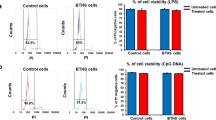Abstract
EPSTEIN–BARR virus (EBV) is a lymphotropic herpesvirus that converts normal human B lymphocytes into established lines. This ‘immortalisation’ preserves the characteristics of the original B cell, including EBV receptors, complement receptors, surface immunoglobulin and secretory immunoglobulin. Surface immunoglobulin is most frequently IgM. EBV-immortalised lines carry multiple copies of the viral genome, detected by nucleic acid hybridisation, and regularly express an EBV-specific nuclear antigen, EBNA. It has been suggested1 that all B-cells carry EBV receptors. If so, and if all B cells can be transformed into lines by EBV, it should be feasible to establish permanent lines from B lymphocytes capable of producing specific antibodies against appropriate antigens. Clearly, in view of the polyclonal transformation obtained after infection of B lymphocytes with a transforming virus strain, for example, B95-8, it will be necessary to pre-select lymphocytes with the appropriate antigen combining site. Resetting with antigen-coupled erythrocytes is one of the conceivable methods for such pre-selection. While this will select lymphocytes with the appropriate surface immunoglobulin receptors, it was recently shown that EBV-transformation activates normal lymphocytes and induces the release of secretory immunoglobulin2. If the procedure is successful, the established lines might therefore be expected to carry the appropriate surface receptor and also to secrete the corresponding antibody. This was actually found in this study, opening the way to the establishment of cell lines producing specific antibodies of choice.
This is a preview of subscription content, access via your institution
Access options
Subscribe to this journal
Receive 51 print issues and online access
$199.00 per year
only $3.90 per issue
Buy this article
- Purchase on SpringerLink
- Instant access to full article PDF
Prices may be subject to local taxes which are calculated during checkout
Similar content being viewed by others
References
Greaves, F. M., Brown, G. & Rickinson, A. B. Clin. Immun. Immunopath. 3, 514–524 (1975).
Rosén, A., Gergely, P., Jondal, M., Klein, G. & Britton, S. Nature 267, 52–54 (1977).
Böyum, A. Scand. J. clin. Lab. Invest. 21, Suppl. 77–89 (1968).
Osoba, D. J. exp. Med. 132, 368–383 (1970).
Brownstone, A., Mitchison, N. A. & Pitt-Rivers, R. Immunology 10, 465–479 (1966).
Koskimies, S., Sarvas, H. & Kaartinen, M. Immun. Commun. 2, 1–14 (1973).
Klein, G., Sugden, B., Leibold, W. & Menezes, J. Intervirology 3, 232–234 (1974).
Cunningham, A. J. & Szenberg, A. Immunology 14, 599–600 (1968).
Mäkelä, O. Immunology 10, 81–86 (1966).
Becker, M. & Mäkelä, O. Immunochemistry 12, 329–331 (1975).
Karjalainen, K. & Mäkelä, O. Eur. J. Immun. 6, 88–93 (1976).
Béchet, J. M., Fialkow, P. J., Nilsson, K. & Klein, G. Expl Cell Res. 89, 275–282 (1974).
Reedman, B. M. & Klein, G. Int. J. Cancer 11, 499–520 (1973).
Yefenof, E. & Klein, G., Expl Cell Res. 99, 175–178 (1976).
Klein, G., Dombos, L. & Gothoskar, B. Int. J. Cancer 10, 44–51 (1972).
Author information
Authors and Affiliations
Rights and permissions
About this article
Cite this article
STEINITZ, M., KLEIN, G., KOSKIMIES, S. et al. EB virus-induced B lymphocyte cell lines producing specific antibody. Nature 269, 420–422 (1977). https://doi.org/10.1038/269420a0
Received:
Accepted:
Issue Date:
DOI: https://doi.org/10.1038/269420a0
This article is cited by
-
The advent and rise of monoclonal antibodies
Nature (2019)
-
Production of highly and broad-range specific monoclonal antibodies against hemagglutinin of H5-subtype avian influenza viruses and their differentiation by mass spectrometry
Virology Journal (2018)
-
Generation of human neutralizing monoclonal antibodies against the 2009 pandemic H1N1 virus from peripheral blood memory B lymphocytes
Cellular & Molecular Immunology (2013)



